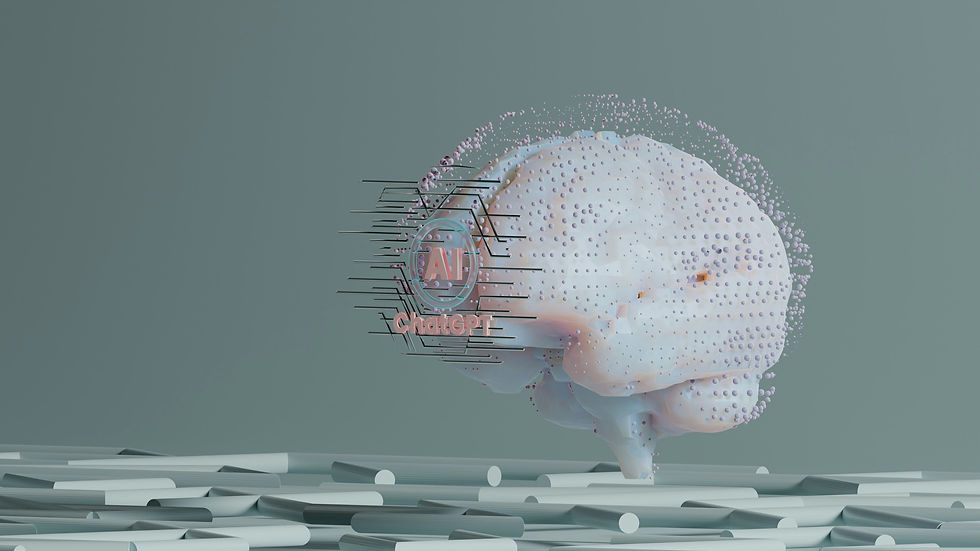Title: The Future of Claims: How AI Is Reshaping P&C Insurance Operations
- Felipe Jimenez

- Jun 19
- 3 min read
In 2025, artificial intelligence (AI) is no longer a futuristic add-on in the property and casualty (P&C) insurance industry — it's a core operational asset. From fraud detection to claims automation, AI is fundamentally changing how insurers manage risk, process claims, and deliver customer service. As leading carriers continue to modernize, the claims function is emerging as one of the top areas where AI is driving transformation.
At James Search Group, we work closely with P&C insurers across North America. Based on what we're seeing in the market, AI isn’t just improving process efficiency—it’s also reshaping the skills, structures, and leadership qualities required to succeed in the years ahead.
AI and Claims: The Shift from Reactive to Proactive

Traditionally, claims management has been reactive: insurers wait for loss notifications, assess damages manually, and process claims over weeks. AI is flipping this model.
Today, AI-powered systems can detect potential claims from third-party data before a customer even files a report. For instance, if a weather system hits a region where policyholders are located, automated alerts can flag likely losses. Paired with drone footage, image recognition, and geospatial data, adjusters can proactively assess damage at scale, often without setting foot on-site.
For hiring managers, this shift means the claims function is moving from field-heavy roles toward hybrid models combining technology oversight, data interpretation, and customer engagement.
Accelerated Claims Processing Through Automation
Another major benefit of AI in claims is speed. Machine learning models can now review structured data, images, and video to assess damage, assign severity levels, and even recommend settlement amounts. In auto claims, this means customers can upload accident photos and receive a quote within minutes.
These gains in efficiency reduce not only operational costs but also customer frustration. Faster turnaround times improve satisfaction and free up human adjusters to handle more complex, high-value claims where empathy and negotiation are essential.
As a result, there is growing demand for claims professionals who can balance tech fluency with soft skills — able to navigate digital tools while maintaining a strong human touch.
Fraud Detection: AI as a Watchdog
Insurance fraud has always been a major challenge, but AI has become a game-changer in detecting patterns that would be difficult for human teams to uncover. Natural language processing and anomaly detection algorithms can scan thousands of claims in real time, flagging unusual patterns for investigation.
Whether it’s spotting duplicate invoices, tracking suspicious behavior across regions, or cross-referencing data from social media, AI systems offer a powerful tool for reducing fraud risk.
That said, AI is only as effective as the data and context it’s fed. This is creating new roles within claims teams — data integrity analysts, fraud tech specialists, and hybrid claims/data roles that can bridge operational knowledge with digital investigation tools.
Human + AI: Rethinking the Role of the Adjuster
Contrary to some fears, AI is not replacing adjusters—but it is redefining their value. In 2025, high-performing claims teams will be made up of professionals who can partner with AI tools to improve accuracy and elevate customer experience.

The future adjuster is likely to:
Interpret and validate AI-generated reports
Guide customers through digital claims processes
Step in for nuanced cases that require empathy, negotiation, or legal sensitivity
Train or supervise machine-learning models using frontline insights
This evolution requires hiring managers to look beyond traditional claims experience. Adaptability, emotional intelligence, and tech readiness are becoming just as important as domain expertise.
Organizational Shifts: New Structures for a Digital Claims Ecosystem
As AI takes on more operational tasks, claims departments are flattening and becoming more integrated with IT, data science, and customer experience functions. This cross-functional approach is creating opportunities for hybrid teams and specialized roles that didn’t exist five years ago.
We’re seeing insurers increasingly invest in:
Claims transformation leaders
Data engineers embedded in operations
Agile squads made up of adjusters, tech analysts, and product owners
In-house AI training and ethics teams
This organizational redesign requires recruiters and HR leaders to rethink how they define roles, structure teams, and assess talent potential.
What It Means for Talent Strategy
The impact of AI on claims is not just technological — it's cultural. Companies that thrive will be those that blend automation with a strong focus on training, change management, and talent development.
Hiring strategies should emphasize:
Continuous learning and tech fluency
Cross-functional collaboration experience
Comfort with ambiguity and evolving tools
Alignment with ethical and customer-first principles
At James Search Group, we help P&C insurers identify professionals who can lead and thrive in this AI-enabled future. Whether it’s hiring a transformation leader, a digitally fluent claims director, or a fraud analytics expert, we understand the qualities that matter most in 2025.
The future of claims is here — and it’s intelligent, fast, and human-centric.




Comments